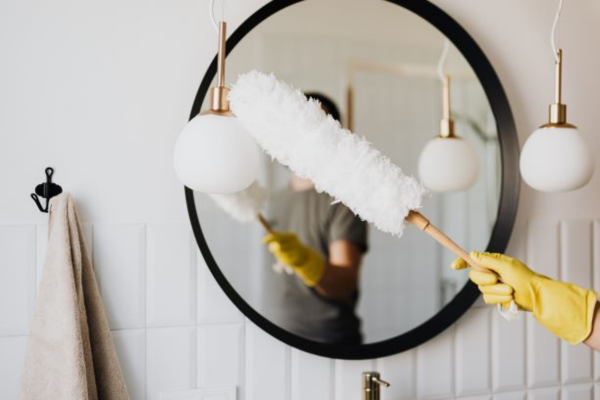The arrival of spring means waving goodbye to the winter blues, but for allergy sufferers, it also means the start of sneezing, wheezing, and other seasonal symptoms. Aside from reaching for meds, you can find some relief through a spring cleaning routine, which experts note can help keep allergies at bay. Below are some useful tips on how to remove allergens from your home and prevent more from getting in.
Keep it clean
One way to reduce your spring cleaning workload is to keep on top of things throughout the year. Change your air filters every month and use filters with a MERV rating of 11 or 12. Though vacuuming your rugs and carpets may seem like an efficient way to zap allergens, irritants like dust mites and pet dander can easily be released back into the room while you clean. To prevent this, use a vacuum with a HEPA filter or a cyclonic vacuum, which traps allergens, at least once a week.
Clean up after your pets
Pet dander may be elevated in certain parts of your home after a long winter spent indoors. If you have pet allergies, vacuum your pet’s sleeping quarters well, wash your pet and pet’s bedding frequently, and speak to your vet about a well-balanced diet for your animal, because a healthy pet may shed less dander.
Wash bedding weekly
Dust mites are the most common trigger of indoor allergy and asthma symptoms, and they thrive on soft surfaces — which means your greatest exposure to them is through your mattress. To help decrease susceptibility, wash bedding weekly in hot water (130°F) and dry on a hot cycle. If your comforter can’t be laundered, cover it with a washable duvet cover to keep dust mites, dander, and pollen out. Encase mattresses, box springs, and pillows in allergen-proof covers.
Clean drapes and upholstery
It’s essential to wash, dry-clean, or vacuum drapes, as well as vacuum sofas and chairs to remove lingering allergens, and wash or dry-clean throw rugs. When renovating rooms in the future, skip wall-to-wall carpeting and opt for hard floors such as hardwood, tile, or sheet vinyl, which are easier to clean and don’t harbor allergens.
Don’t forget to dust
Because dust can aggravate symptoms in many people, it’s important to remember to clean out-of-the-way areas. Use a damp microfiber cloth to trap dust as you wipe down flat surfaces that rarely get cleaned, such as baseboards, crown molding, air duct vents, ceiling fan blades, and blinds. After dusting, leave the room for 20 minutes to let the dust settle. Whenever possible, ditch clutter; it’s much easier to clean if you don’t have to dust around piles of paperwork and an assortment of knick-knacks.
Watch out for humidity
Moisture control helps reduce mold. Use bathroom fans and clean up any standing water immediately. Use detergent and water to scrub visible mold from surfaces and completely dry them. Use dehumidifiers in damp areas such as basements, and empty and clean the holding tank regularly. Run the air conditioning in humid weather to remove moisture from the air. Repair leaking roofs or drippy pipes, as chronic leaks allow mold to spread.
Keep the outdoors out
You may be tempted to open your windows to allow fresh spring scents into your home, but doing so can allow pollen particles inside. If you’ve spent time outdoors, launder your clothes and shampoo your hair to avoid carrying around allergens or transferring them to indoor surfaces such as sofas and bedding. You should also know that chemicals in air fresheners and candles can irritate the lungs and trigger asthma attacks.
Avoid harsh chemicals
Whenever possible, use cleaning products that are unscented or natural. Consider combining one cup of distilled vinegar and two tablespoons of baking soda in half a gallon of water. Use this eco-friendly solution to wipe down surfaces and then let air-dry.
With these spring cleaning tips in mind, you’re well on your way to not only making your home look nice, but keeping your seasonal allergies under control.
